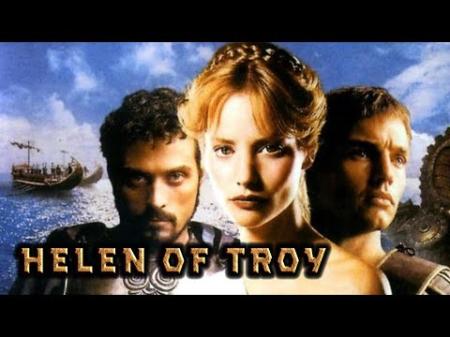Light can be deadly. Many animals and plants are threatened by artificial light. Numerous organisms have found their evolutionary niche in the dark of night, and now have to adapt to bright nights. Not all of them succeed.
More than half of all animals are nocturnal. Their sensory organs, their behavior, their orientation and their metabolism are adapted to darkness, moonlight and starlight. But in today’s modern world, countless artificial light sources create something called light smog. This light pollution is generated in cities, villages and industrial areas. It comes from advertising billboards, roads and paths - and even from space.
Artificial light disturbs the natural way of life of animals and plants, destroys biotopes and, not least, eliminates biodiversity. Indeed, light pollution has recently been recognized by experts as a possible main cause of global species extinction.
However, the urgency of the issue is still underestimated by the general public and politicians. As part of a citizen science project, people all over Germany are helping to catch, identify and count aquatic insects in the country’s largest light pollution field experiment.
Franz Hölker, ecologist at the Leibniz Institute of Freshwater Ecology and Inland Fisheries in Berlin and his research team want to find out how many insects end up in the street lamp death trap. Peter Südbeck, head of the Wadden Sea National Park in Germany, still one of the darkest regions in Europe, has been observing a worrying change in the behavior of migratory birds for some time.
The Wadden Sea is a global transportation hub for shipping traffic, but also a resting and feeding place for millions of birds. Drilling platforms, ships and light smog cause the birds to stray from their route. More and more become so exhausted they can no longer make it to their vital resting place. The film is a night-time journey through the work of scientists who have set themselves the task of bringing darkness back to nature - and to us humans.
#documentary #dwdocumentary
______
DW Documentary gives you knowledge beyond the headlines. Watch top documentaries from German broadcasters and international production companies. Meet intriguing people, travel to distant lands, get a look behind the complexities of daily life and build a deeper understanding of current affairs and global events. Subscribe and explore the world around you with DW Documentary.
Subscribe to:
⮞ DW Documentary (English):
/ dwdocumentary
⮞ DW Documental (Spanish):
/ dwdocumental
⮞ DW Documentary وثائقية دي دبليو (Arabic):
/ dwdocarabia
⮞ DW Doku (German):
/ dwdoku
⮞ DW Documentary हिन्दी (Hindi):
/ dwdochindi
For more visit: http://www.dw.com/en/tv/docfilm/s-3610
Follow DW Documentary on Instagram:
/ dwdocumentary
Follow DW Documental on Facebook:
/ dwdocumental
We kindly ask viewers to read and stick to the DW netiquette policy on our channel: https://p.dw.com/p/MF1G
Transcript
More than half of all animals are nocturnal. Their sensory organs, their behavior, their orientation and their metabolism are adapted to darkness, moonlight and starlight. But in today’s modern world, countless artificial light sources create something called light smog. This light pollution is generated in cities, villages and industrial areas. It comes from advertising billboards, roads and paths - and even from space.
Artificial light disturbs the natural way of life of animals and plants, destroys biotopes and, not least, eliminates biodiversity. Indeed, light pollution has recently been recognized by experts as a possible main cause of global species extinction.
However, the urgency of the issue is still underestimated by the general public and politicians. As part of a citizen science project, people all over Germany are helping to catch, identify and count aquatic insects in the country’s largest light pollution field experiment.
Franz Hölker, ecologist at the Leibniz Institute of Freshwater Ecology and Inland Fisheries in Berlin and his research team want to find out how many insects end up in the street lamp death trap. Peter Südbeck, head of the Wadden Sea National Park in Germany, still one of the darkest regions in Europe, has been observing a worrying change in the behavior of migratory birds for some time.
The Wadden Sea is a global transportation hub for shipping traffic, but also a resting and feeding place for millions of birds. Drilling platforms, ships and light smog cause the birds to stray from their route. More and more become so exhausted they can no longer make it to their vital resting place. The film is a night-time journey through the work of scientists who have set themselves the task of bringing darkness back to nature - and to us humans.
#documentary #dwdocumentary
______
DW Documentary gives you knowledge beyond the headlines. Watch top documentaries from German broadcasters and international production companies. Meet intriguing people, travel to distant lands, get a look behind the complexities of daily life and build a deeper understanding of current affairs and global events. Subscribe and explore the world around you with DW Documentary.
Subscribe to:
⮞ DW Documentary (English):
/ dwdocumentary
⮞ DW Documental (Spanish):
/ dwdocumental
⮞ DW Documentary وثائقية دي دبليو (Arabic):
/ dwdocarabia
⮞ DW Doku (German):
/ dwdoku
⮞ DW Documentary हिन्दी (Hindi):
/ dwdochindi
For more visit: http://www.dw.com/en/tv/docfilm/s-3610
Follow DW Documentary on Instagram:
/ dwdocumentary
Follow DW Documental on Facebook:
/ dwdocumental
We kindly ask viewers to read and stick to the DW netiquette policy on our channel: https://p.dw.com/p/MF1G
Transcript





